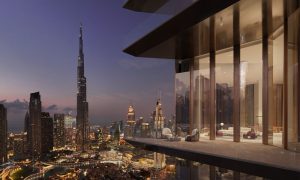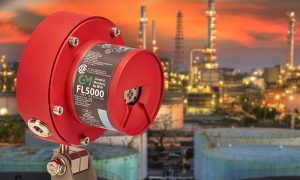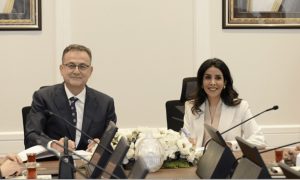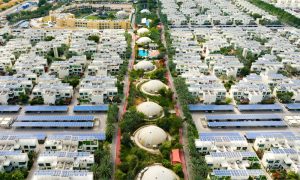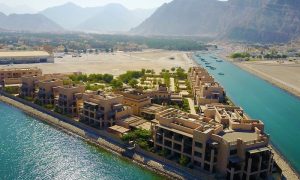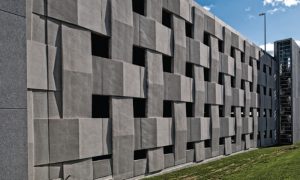Five GCC rail projects on track
Kuwait Financial Centre SVP ? research M.R Raghu says GCC infrastructure is exploding, with demand driving forward rail developments on the drawing board. Louise Birchall looks at the most promising projects.

GCC infrastructure is “simply exploding”, according to the Kuwait Financial Centre (Markaz), which reports the number of fatalities on the region’s roads as averaging 21 per every 1000 people (in Oman, KSA, the UAE, Qatar, Kuwait and Bahrain), compared to 10 in India and six in China, for example. This has led the authorities to invest heavily in road projects, with an expected US $10 billion being poured into developments over the next decade.
However, landmass restrictions limit the number of roads that can be built and as a result demand has arisen for substantial railway networks. Authorities have responded by setting out ambitious plans for developing the region’s rail sector.
Connecting the GCC
Perhaps the most significant development is the pan-GCC rail project. Currently valued at $15 billion, the 2177-kilometre railway will facilitate travel between GCC countries. The rail link will cater to passenger- and freight traffic and is expected to be completed in 2016. The first line will run 1970 kilometres; starting in Kuwait, passing through Saudi Arabia, Bahrain, Qatar and the UAE, and ending in Oman. The second line will be 1984-kilometres long and will run through Kuwait, Saudi Arabia, the UAE and Oman.
Each country will build its own national railway, which will eventually be combined to form the GCC network. The countries governments will be required to finance a percentage of construction costs and look for private sector investment.
Under a tentative schedule, consortiums bidding to design the rail network will be screened in May and contracts awarded by early 2011, according to recent news reports. And it seems that the UAE is steaming ahead of its neighbours with Union Railway telling contractors at the end of last month that the tendering process on the first phase of the UAEwide rail network will start within the next two months.
Phase one of the 264-kilometre UAE railway network will facilitate the transportation of granulated sulphur between the southern Shah sour gas field, another field, Habshan and on to Ruwais on the Gulf Coast when it opens. If state rail company Union Railway can complete the first phase of its $11 billion rail network within the ambitious timeframe it has set for itself, the company will have set the standard not only for the UAE railway, but also the planners behind the GCC’s five other rail projects.
The UAE rail network is expected to grow in phases to encompass around 100 locomotives and 5000 freight wagons by 2017, transporting cargo and people in equal measures. It is expected that Union Railway will ask for expressions of interest on construction contracts by the end of May, and will invite firms to prequalify for the project in the third quarter of the year. The completion date of the first phase is 2013.
This news puts the UAE ahead of its GCC neighbours in terms of progress on the railway project. Perhaps, this is not surprising considering the recent news that car crashes cost the UAE AED 21 billion per year ($5.7 billion), not to mention 1000 lives annually. The financial loss includes direct and indirect expenses such as medical costs, insurance loss, property damage, family income losses and traffic congestion
The research was announced at a Road Safety on Four Continents conference in Abu Dhabi and came from research compiled on behalf of the National Transport Authority by the Roadway Transportation and the Traffic Safety Research Centre, situated at the UAE University. The implementation of the network is certainly positive news for the project and the region’s wider rail sector.
UAE steaming ahead
Markaz senior vice president — research M.R Raghu points out that while research suggests investments in rail projects in the GCC region could reach $109 billion over the next 10 years (based on projects already announced in Saudi Arabia, UAE, Bahrain Qatar, Kuwait and including the pan-GCC project), most are still in planning stage and two, at a combined value of $3.2 billion have been put on hold. In this respect, the UAE has bucked the trend again with the launch of Dubai Metro.
Intended as another solution to relieve the emirate’s severely-congested roads, the Roads and Transport Authority (RTA) is developing the metro network, which comprises four lines; the Red Line is 45-kilometres long and runs from Rashidiya to the Jebel Ali border. This was completed in 2009. The Green Line is 49 kilometres long and runs from Dubai Airport Free Zone to Dubai Healthcare City and is expected to open in June 2010.
The Purple line is scheduled to open in the fourth quarter of 2013 and will run 49-kilometres from Dubai International Airport to Jebel Ali Airport. The Blue Line is 50-kilometres and will connect Dubai International Airport with Al Maktoum International Airport, scheduled to be completed in 2014, according to Markaz. Furthermore, Union Railway CEO Richard Bowker told reporters last month that international bidders for contracts on the nation-wide rail network would not be deterred by the high-profile disputes over unpaid bills that have hit the headlines over the past few months. He said the Dubai Metro project is considered to be of “major national interest” and that firms will be “beating a path to our door”. Meanwhile, Abu Dhabi plans to construct an intercity rail system to be completed by 2015.
Existing Solutions
Saudi Arabia is also making significant headway. In fact, the country is the only one in the GCC to have an existing railway network, which connects the port city of Dammam to the capital Riyadh. The two lines comprise a 556-kilometre track built in the 1950s for transporting freight and a 449-kilometre single track built in the 1980s for passenger trains. “It’s a very small network, but it proves the concept can work in this region,” says M.R Raghu.
The network carried 1.1 million passengers and 3.48 million tons of cargo in 2008; signifying a compound annual growth rate (CAGR) of 7.58% and 13.43% for passenger traffic and cargo respectively since 2002. “We believe that the segment has the potential for exponential growth in traffic after the completion of projects currently being executed given that the expat strength in the country would prefer to use this mode of transport,” adds M.R Raghu.
KSA’s High-Speed Implementation
In terms of upcoming projects, KSA has interesting and extensive plans to connect various parts of the country.
The major projects planned and currently being executed are the North- South Line, the Saudi Land Bridge Project and the Haramain High-speed Rail Project (also known as the Makkah Madina Rail Link (MMRL)). Then there are smaller mono-rail projects being executed in Riyadh and planned in Jeddah, according to a GCC Roads and Railways report compiled by Markaz (January 2010).
The Saudi Landbridge Project will connect the port cities of Jeddah, Dammam and Jubail, passing through Riyadh and serving its dry port. This entails the construction of approximately a 950-kilometre new line between Riyadh and Jeddah and the construction of a 115-kilometre line between Dammam and Jubail.
The project includes up-gradation of the existing rail link between Riyadh and Dammam, including a link to the new Riyadh-Jeddah and Dammam-Jubail lines. It also covers integration of the new lines with the Jeddah Islamic Port, King Abdul Aziz Port, Dammam Port and the Riyadh Dry Port. The $6.6 billion project is scheduled for completion by 2011. Saudi Arabia will grant concessions to the private sector for construction and operation of the Saudi Land Bridge through a build operate transfer (BOT) contract.
Meanwhile, the $6-billion Haramain High-speed Rail Project is passenger centric and will cater mostly to pilgrims and commuters. This involves the construction of a high-speed line linking Jeddah, Makkah and Madinah, with six new stations. Works also comprise the construction of a line between Jeddah and Makkah and construction of a line between Jeddah and Madinah.
KSA will also grant concessions to the private sector for the construction and operation of the Haramain railway, through a design, BOT contract. Consultants Foster + Partners (for the projects stations) and Dar Al-Handasah (Shair and Partners) have been assigned, and Al Arrab Contracting Company is the main contractor.
In February, it was reported that The Council of Ministers (cabinet) in Saudi Arabia is attempting to speed up construction of the Haramain project by forcing the state-owned Public Investment Fund (PIF) to provide available funding.
A cabinet meeting that was held in February this year instructed the Public Investment Fund to finance the service and business contracts for the ongoing railway project by providing interest free loans.
On Track For 2010
The North-South track is an initiative to develop a 2300-kilometre North-to-South railway system that will initially link the northern mineral mines of Al-Jalamid (phosphates) and Az Zabirah (bauxite) to processing facilities in Ras Azur on the Arabian Gulf. The line is scheduled to be completed this year and is expected to carry general cargo, as well as up to two million passengers each year, according to Markaz. At the end of March, the Saudi Arabian Railway (SAR) organization signed a SR278 million ($74 million) agreement with Indias state-owned Rites Company for the operation of the industrial railway.
Qatar Not Far Behind
While the UAE and Saudi Arabia are at the forefront of the GCC ‘rail revolution’, Bahrain, Oman, Qatar and Kuwait also have some projects in the pipeline. However, “plans are all they are”, points out M.R Raghu. But Qatar appears to be the most proactive out of these countries. Qatari Diar vice CEO Dr Hassan Al-Fadala told reporters in February that local contracting companies would be awarded major works in the proposed multi-billion dollar railway projects, 70-80% of which will comprise construction works. The most significant projects include a metro network within Greater Doha, over-ground railways covering Qatar and eventually linking to the GCC network, and cargo trains.
The metro network is expected to have four routes; a Red Route, Green Route, Yellow Route and Blue Route. The Red Route will start from Mesaieed, cross Al Wakra, the New Doha International Airport, downtown Doha and Lusail, and eventually reach Al Khor and Al Shamal. The Green and Yellow routes will link the eastern part of Doha to its west. The Blue Route is designed to run along C-Ring Road.
The metro rail project will cover a distance of 345 kilometres, with trains running at around 80-160 kilometres per hour (KPH). The ground network is expected to cover 345km, with passenger electric trains, which will be running between 220 and 350 KPH. Cargo trains covering major economic centres in Qatar will run at a speed of 120 KPH.
Meanwhile, Bahrain has embarked on a $2 billion Qatar-Bahrain Causeway project, which upon completion will connect the two countries by rail and road. Also, the country is planning a mono-rail at a cost of $1 billion. Oman is in the planning stages of a 200-kilometre railway line linking the towns Soha and Barka.
And Kuwait is planning a national rail network and metro system worth $11 billion. The 518-kilometre railway system will link the proposed 2000-plus kilometer. GCC railway line with Iraq, Iran and other neighbouring countries, as stated in the GCC Roads & Railways report.
Full Steam Ahead
M.R Raghu says the implementation of the GCC rail plans is crucial. Stress on the transportation segment is expected to increase over coming years due to population growth and a growing number of expatriates, which already make up 60% of the population. And there are already signs of visible inadequacies in the Gulf’s infrastructure, particularly in Saudi Arabia, the UAE, Kuwait and Oman, where road density, in terms of the number of cars per kilometre of road, is the highest. While there are clearly ambitious rail plans in the pipeline, these have not been immune to the effects of the global financial crisis.
“These plans came about in the last four-or-five years when the going was very good for the GCC, but things have come to a difficult path. Planned projects will remain in planning stage for the next two-to-three years,” asserts M.R Raghu.
However, he says in spite of an overall shift in the timeframes of some of these projects, they will most certainly come about. “From an investor point of view, the GCC rail sector is absolutely an area of opportunity,” he adds.
TOP FIVE GCC RAIL PROJECTS
1 – PAN-ARAB GCC RAILWAY
The project is to facilitate and integrate transport links between all six GCC member states and is expected to be completed in 2016. The rail links will cater to both passengers and freight traffic. The first of the two railway lines will be 1970-kilometres long, starting in Kuwait and passing through Saudi Arabia, Bahrain, Qatar, the UAE and ending in Oman. The second, 1984-kilometre long line will run through Kuwait, Saudi Arabia, the UAE and Oman.
2 – SAUDI LANDBRIDGE PROJECT
The $6.6 billion railway will connect the port cities of Jeddah, Dammam and Jubail, passing through Riyadh and serving its dry port. The project entails the construction of approximately a 950-kilometre long new line between Riyadh and Jeddah and the construction of a 115-kilometre line between Dammam and Jubail. It includes the up-gradation of the existing rail link between Riyadh and Dammam, including a link to the new Riyadh-Jeddah and Dammam-Jubail lines. It also covers integration of the new lines with the Jeddah Islamic Port, King Abdul Aziz Port, Dammam Port and the Riyadh Dry Port. The project is expected to be completed in 2011.
3 – HARAMAIN HIGH-SPEED RAIL PROJECT (ALSO KNOWN AS THE MAKKAH MADINAH RAIL LINK (MMRL)), SAUDI ARABIA
The Haramain railway is passenger-centric and will cater mostly to pilgrims and commuters. It entails the construction of a high-speed line linking the three cities; Jeddah, Makkah and Madinah, with six new stations. It involves the construction of a new line between Jeddah and Makkah and construction of a new line between Jeddah and Madinah. The project is estimated to cost $6 billion.
4 – NORTH-SOUTH TRACK, SAUDI ARABIA
Saudi Arabia is developing a 2300 kilometre North-to-South railway system that will initially link the northern mineral mines of Al-Jalamid (phosphates) and Az Zabirah (bauxite) to processing facilities in Ras Azur on the Arabian Gulf. The line is expected to carry general cargo as well as up to two million passengers each year. The project is likely to be completed by the end of 2010.
5 – DUBAI METRO LINES
The Roads and Transport Authority (RTA) is developing Dubai Metro to solve traffic-congestion problems in Dubai. The metro network comprises four lines; the Red Line is 45-kilometres long and runs from Rashidiya to the Jebel Ali border and was completed in 2009. The Green Line is 49 kilometres and runs from Dubai Airport Free Zone to Dubai Healthcare City and is expected to open in June 2010. The Purple line is scheduled to open in the fourth quarter of 2013 and will run 49 kilometres from Dubai International Airport to Jebel Ali Airport. The Blue Line is 50-kilometres long and will connect Dubai International Airport with Al Maktoum International Airport, scheduled to be completed in 2014.
